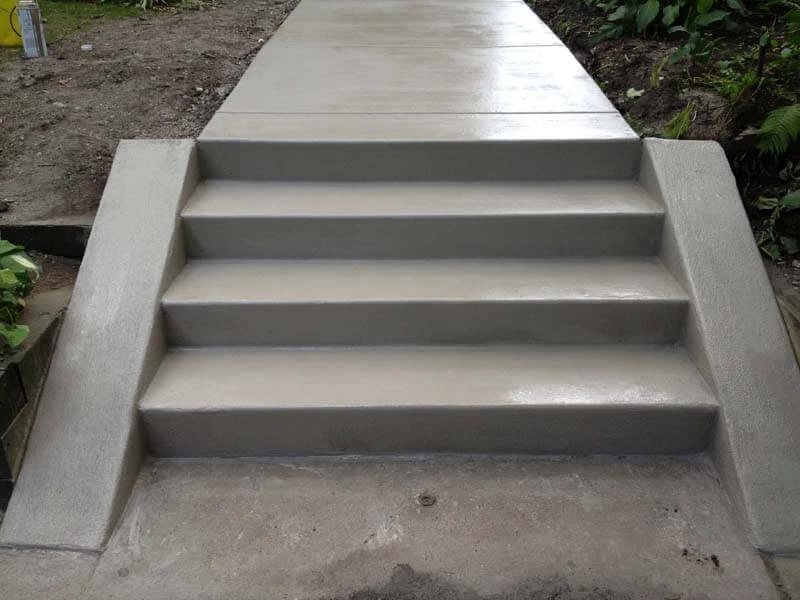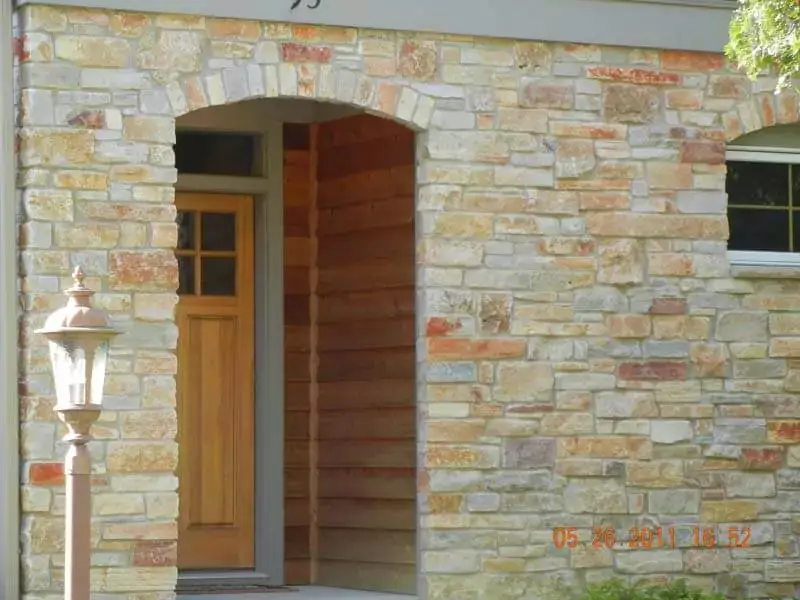When it comes to designing and installing concrete stairs, the goal is often twofold: to create a visually appealing structure and to ensure the highest levels of safety. Concrete stairs are a popular choice for both residential and commercial properties due to their durability and versatility. However, achieving a balance between aesthetics and functionality requires careful planning and attention to detail. At Wohlwend Concrete, we have decades of experience in achieving functional, safe and aesthetically pleasing concrete stairs. In this blog, we’ll explore some practical considerations to help you design concrete stairs in Minneapolis that are not only beautiful but also safe.

1. Proper Dimensions: The Foundation of Safe Stairs
One of the most critical aspects of stair design is getting the dimensions right. Improperly sized steps can lead to accidents, making it crucial to follow established guidelines. The standard dimensions for stairs typically involve a rise (the height of each step) of 7 to 8 inches and a run (the depth of each step) of 10 to 12 inches. Adhering to these measurements ensures that the stairs are comfortable to use and reduces the risk of tripping or falling.
Another important dimension to consider is the width of the stairs. Wider stairs not only provide more space but also enhance safety by accommodating more foot traffic. For residential properties, a minimum width of 36 inches is recommended, while commercial properties might require even wider stairs to comply with building codes.
2. Non-Slip Surfaces: Enhancing Safety in All Conditions
Concrete stairs can become slippery, especially when wet or icy. To mitigate this risk, it’s essential to incorporate non-slip surfaces into the design. There are several ways to achieve this:
– Textured Finishes: Adding a textured finish to the surface of the concrete can significantly improve traction. Options like broom finishes or exposed aggregate provide a rougher surface that reduces slipperiness.
– Anti-Slip Treads: Installing anti-slip treads is another effective solution. These treads can be made from materials like rubber or metal and are applied to the edge of each step to provide additional grip.
– Coatings and Sealers: Specialized non-slip coatings and sealers can be applied to the surface of the concrete. These products create a slip-resistant layer that enhances safety while maintaining the aesthetic appeal of the stairs.
3. Drainage Solutions: Preventing Water Accumulation
Water accumulation on stairs is not only unsightly but also hazardous. Without proper drainage, water can pool on the surface, leading to slippery conditions and potential damage to the concrete over time. Implementing effective drainage solutions is crucial to maintaining the safety and longevity of your stairs.
One approach is to design the stairs with a slight slope, allowing water to naturally flow off the surface. Additionally, integrating drainage channels or weep holes into the design can help direct water away from the stairs, preventing accumulation. For outdoor stairs, consider installing gutters or downspouts to manage rainwater effectively.
4. Aesthetic Considerations: Beauty Without Compromising Safety
While safety is paramount, it doesn’t mean you have to sacrifice aesthetics. Concrete stairs can be customized to match the style of your property. From various finishes and colors to decorative elements like stamped patterns or inlays, there are numerous ways to enhance the appearance of your stairs while keeping them safe.
For instance, incorporating contrasting colors or materials for the nosing (the edge of the step) can add a visual appeal while also making the edges of the steps more visible, thereby reducing the risk of missteps.
Designing concrete stairs that are both beautiful and safe requires careful consideration of dimensions, surface treatments and drainage. By following these practical tips, you can create stairs that not only enhance the aesthetic appeal of your property but also provide a safe and durable solution for years to come. At Wohlwend Concrete, we specialize in crafting high-quality concrete stairs that meet these exacting standards, ensuring your stairs are as functional as they are beautiful. Call us at 651-426-2610 or contact us to ask any questions you may have.




